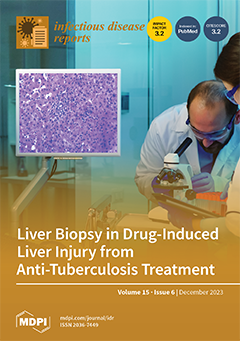In response to the COVID-19 pandemic, German public health authorities launched various infection control procedures. In line with this, anti-pandemic infection control was also implemented for German military and police deployments. The presented study assessed the impact of this increased infection control effort
[...] Read more.
In response to the COVID-19 pandemic, German public health authorities launched various infection control procedures. In line with this, anti-pandemic infection control was also implemented for German military and police deployments. The presented study assessed the impact of this increased infection control effort on deployment-associated infections in a holistic approach. To do so, the results of post-deployment assessments offered to German soldiers and police officers at the Department of Tropical Medicine and Infectious Diseases of the Bundeswehr Hospital Hamburg obtained during the pandemic period were compared to the results recorded during the pre-pandemic period in an exploratory, hypothesis-forming comparative study. In total, data from 1010 military deployments and 134 police deployments, predominantly to the African or the Eastern Mediterranean WHO regions, were included in the analyses. In the main results, a significant decrease in gastroenteritis in deployed soldiers (20.1% versus 61.3%,
p < 0.0001) and at least a trend in the same direction in deployed police officers (25.7% versus 35.4%,
p = 0.4026) were shown for the pandemic period, while no consistent tendency into the one or the other direction was detectable for febrile illness on deployment. In contrast to the finding of less frequently reported deployment-associated gastroenteritis, the detection rates of enteric microorganisms after deployment, including poor hygiene-related colonization with apathogenic protozoa, remained unchanged. Regarding non-enteric infections, the numbers of serologically confirmed malaria cases on deployment and as expected, due to increased airway protection,
Mycobacterium tuberculosis-specific immune-conversion dropped significantly with
p = 0.0037 and
p = 0.009, respectively. As a side finding, soldiers and police officers with post-deployment medical assessments were more likely to be older and male during the pandemic compared to the pre-pandemic period. In summary, only minor changes in deployment-associated infection and colonization rates were seen in response to the increased infection control procedures during the pandemic period, apart from respiratory infections. In particular, the clinical finding of less gastroenteritis on deployment was not matched by a concordant decline in poor hygiene-related enteric colonization with apathogenic protozoa in the soldiers’ guts, indicating that the fecal–oral transmission risk remained basically the same.
Full article






